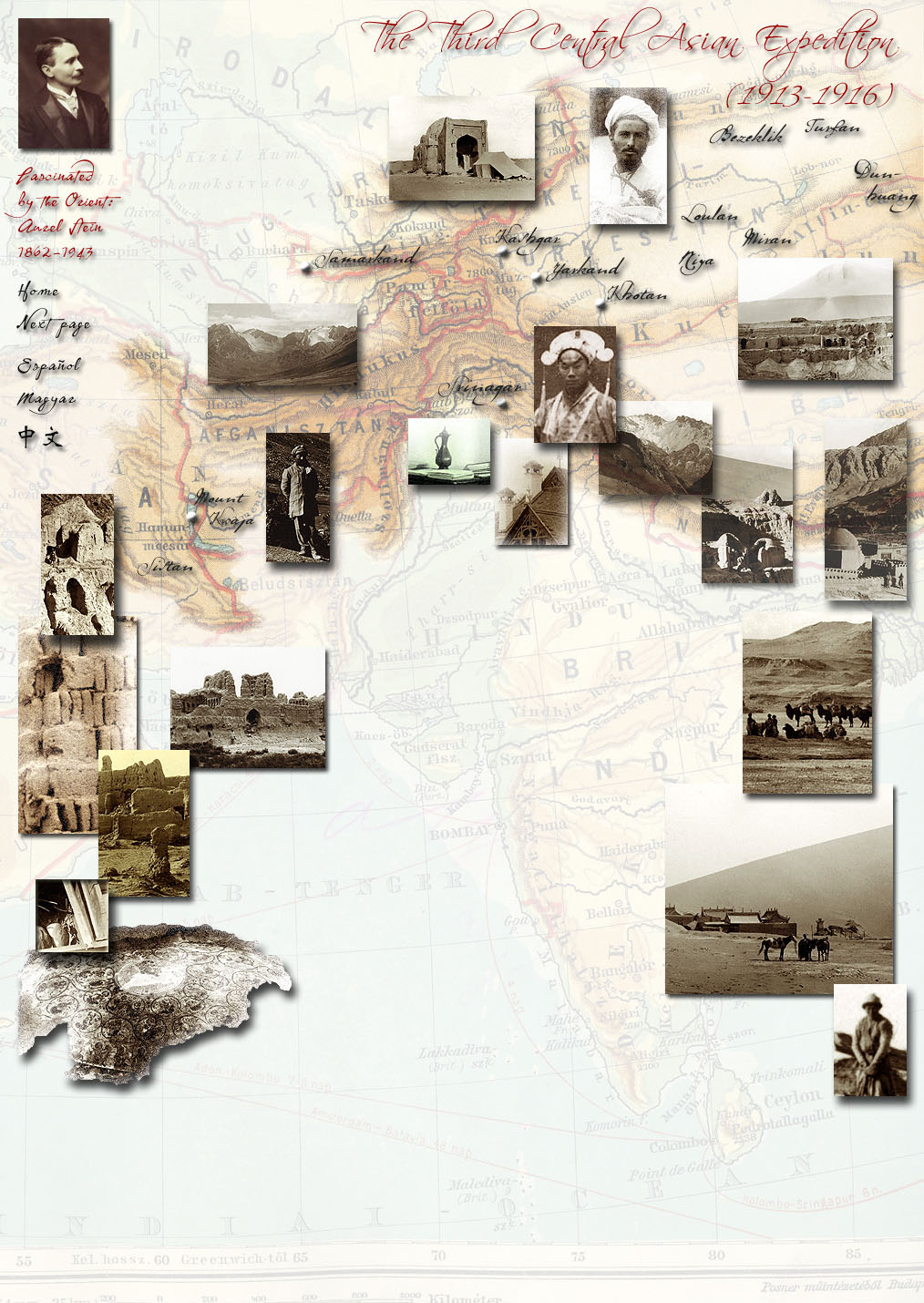
 From
there the journey to Lop Nor followed the old caravan
From
there the journey to Lop Nor followed the old caravan route, allowing him to trace more remains in Domoko, Niya
River, and Miran. He set out on 1 February 1914 into the waterless
desert northward, moving towards Loulan, a new route. Following
the ancient border line discovered during the second expedition he
arrived again at Dunhuang by the close of March 1914. He
successfully traced the border eastwards for another 250 miles to
the Etsin Gol River. In May he reached Karakhoto, which he
identified with the city of “Etzina”, described by Marco Polo, who
had taken the same routes in the 13th century.
In June 1914, Stein had
to stop his work at desert
sites because of the increasing heat, turning his
attention to the Nanshan range. From September, he set out on a journey
of
some 500 miles along unsurveyed routes, right across the desert ranges
of the
Beishan mountain to the easternmost Tianshan range. The journey along
its
northern foot acquainted him with a part of Dzungaria. He excavated
sites near
Turfan on the northern Silk Road, especially in Astana and Bezeklik.
![]() In
June 1915, Stein returned to Kashgar. Then he started a three
In
June 1915, Stein returned to Kashgar. Then he started a three
month journey, during which approximately 1,700 miles were
![]() covered
on foot and horseback across the Pamirs into
covered
on foot and horseback across the Pamirs into
Russian Turkestan. He arrived at Samarkand in October
1915. From there he reached the Persian border by rail,
and travelled along the Persian-Afghan border. He reached
Sistan in early December 1915. There he began a third
winter’s archaeological campaign in ancient Sakastan. Among the
extensive ruins of a
palace on the isolated rocky hill of Koh-i-Kwaja, he discovered the
remains of wll paintings, the oldest
ones brought to light in Iran. Some of them, distinctly Hellenistic in
style, probably dated from
Parthian times, illustrating an Iranian link between the Greco-Buddhist
art of north-western India and the
Buddhist art of Central Asia. Another interesting discovery in the same
area was that of a chain of watch towers
that form an exact counterpart to the Chinese Han limes (border
defenses), and date from the Parthian period.
Stein returned to India in March 1916.
Stein’s detailed record of this expedition, Innermost Asia, was published in 1928.
